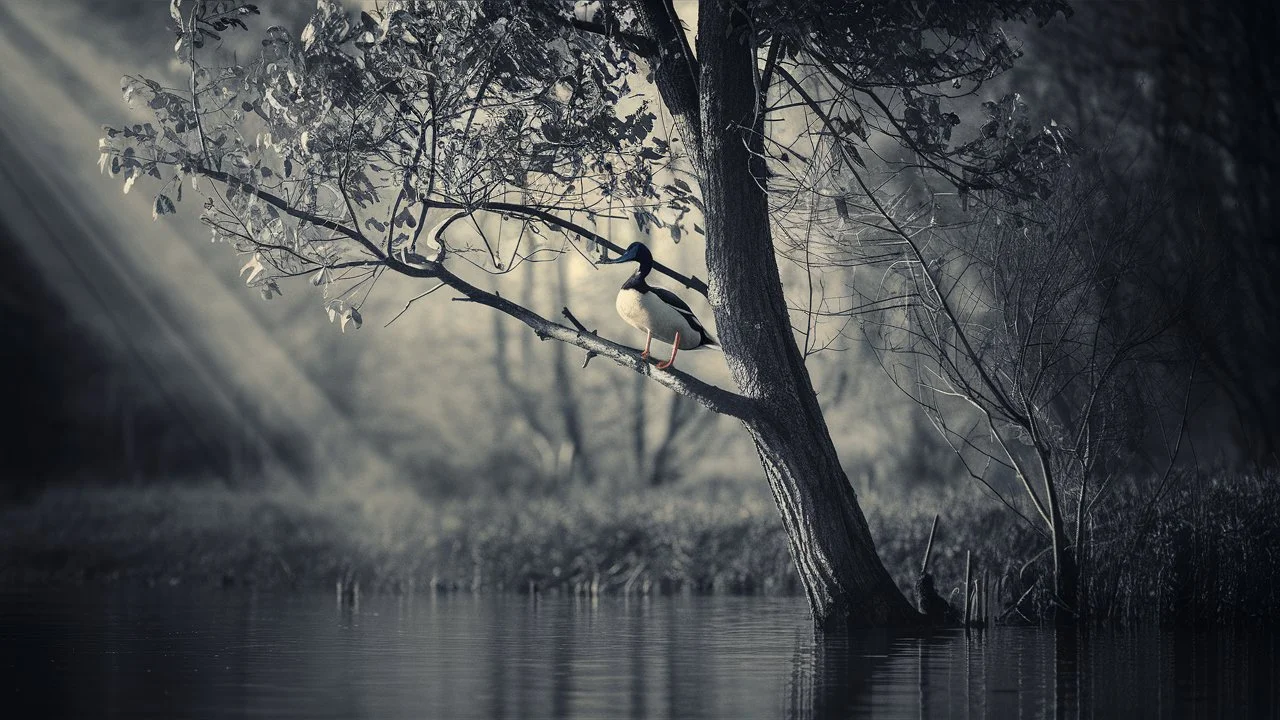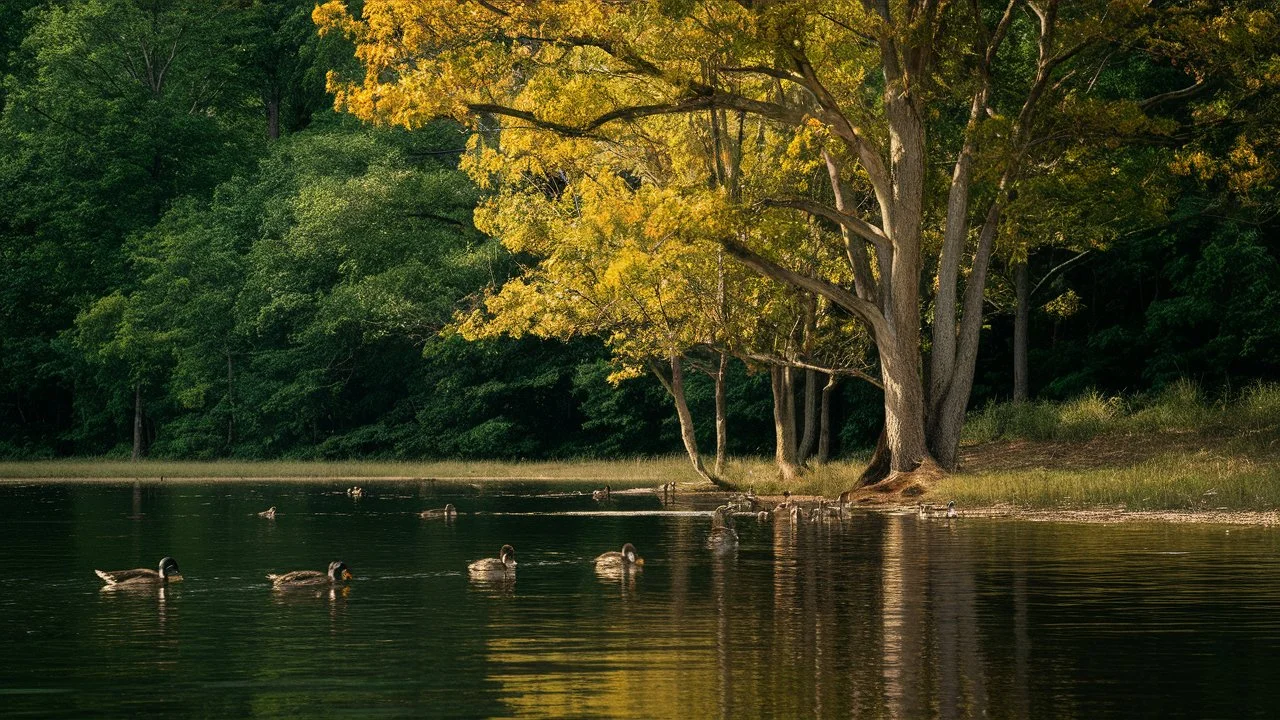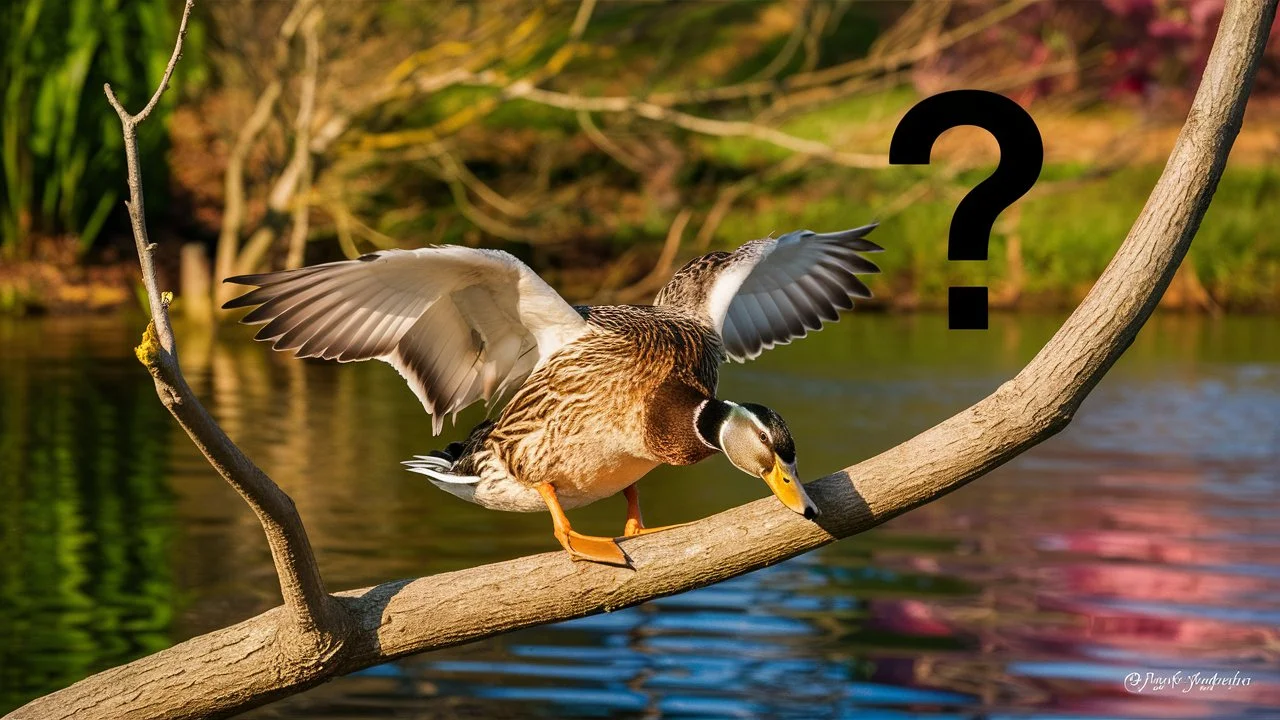Ducks are generally associated with water bodies such as lakes, ponds, and rivers, where they swim, forage, and raise their young. However, the question of whether ducks land in trees introduces a lesser-known aspect of duck behavior. While most ducks are primarily ground and water dwellers, certain species have adapted to perching and nesting in trees.
This intriguing behavior is particularly notable in species like wood ducks and mandarin ducks, which have evolved specific adaptations that allow them to utilize arboreal habitats. This article explores the fascinating world of tree-nesting ducks, examining their unique behaviors, ecological significance, and the adaptations that enable them to thrive in environments that many other ducks would find challenging.
Yes, certain duck species, such as wood ducks and mandarin ducks, do land in trees. These species have evolved specific adaptations, like strong claws and excellent balance, which allow them to perch on branches and nest in tree cavities. However, most ducks typically land on water or the ground near water sources.
Do Ducks Land in Trees?
Ducks are fascinating creatures, widely recognized for their presence in lakes, ponds, rivers, and wetlands. They are primarily waterfowl, which means they are adapted to living on or near water. While most people associate ducks with water bodies, the question arises: do ducks land in trees? The answer is nuanced, as it depends on the species of duck and their specific behaviors. This comprehensive exploration will delve into the various aspects of duck behavior related to perching and landing in trees, with a focus on species known for such behavior, their adaptations, and the ecological significance of these behaviors.
Related reading: Do Ducks Stay Together?

General Behavior of Ducks
Typical Habitats
Most ducks are adapted to aquatic environments. They spend a significant amount of time in water, where they feed, mate, and raise their young. Their bodies are perfectly adapted for swimming, with webbed feet, waterproof feathers, and a body shape that aids in buoyancy and maneuverability.
- Feeding: Ducks feed on a variety of aquatic organisms, including plants, insects, small fish, and crustaceans. Some species are dabblers, feeding on the water’s surface, while others are divers, going underwater to find food.
- Nesting: Ducks typically nest on the ground, close to water sources. They build nests in reeds, grasses, or shallow depressions lined with down and feathers.
Flight and Landing
Ducks are strong fliers, capable of covering long distances during migration. Their takeoff and landing techniques are generally geared towards water or flat ground, where they can use their momentum to glide smoothly.
- Takeoff: Ducks often need a running start across the water to take off, flapping their wings rapidly to gain lift.
- Landing: When landing on water, ducks extend their feet forward to act as brakes, allowing them to glide to a stop.
Ducks That Land in Trees
While the majority of duck species do not land in trees, there are notable exceptions. Certain species have evolved behaviors and physical adaptations that enable them to perch and nest in trees.
Wood Ducks (Aix sponsa)
Wood ducks are among the most well-known tree-nesting ducks. They are native to North America and are easily recognizable by their colorful plumage and distinctive calls.
- Tree Perching: Wood ducks have strong claws and a keen sense of balance, allowing them to perch on tree branches. They often land in trees to rest or scout for nesting sites.
- Nesting Habits: These ducks prefer to nest in tree cavities, often using old woodpecker holes or natural hollows. They may also use man-made nest boxes placed in suitable habitats. The female lines the nest with down and lays a clutch of 10-15 eggs.
- Ducklings: Remarkably, wood ducklings leave the nest within 24 hours of hatching. The mother calls to them from below, and the ducklings jump from the tree, often from great heights, to reach the ground or water below.
Mandarin Ducks (Aix galericulata)
Mandarin ducks, native to East Asia, are closely related to wood ducks and share many of their behaviors, including tree nesting.
- Appearance: Mandarin ducks are known for their strikingly colorful plumage, particularly in males, which display a variety of vibrant colors and patterns.
- Tree Nesting: Like wood ducks, mandarin ducks nest in tree cavities. They prefer locations near water bodies such as rivers and lakes.
- Adaptations: Their strong claws and lightweight bodies make it easier for them to perch on branches and navigate tree cavities.
Adaptations for Tree Nesting
Tree-nesting ducks like wood ducks and mandarin ducks possess several adaptations that enable them to utilize arboreal habitats effectively.
- Strong Claws: Their claws are more robust and curved than those of ground-nesting ducks, providing better grip on branches.
- Wing Structure: They have slightly different wing structures that allow for more maneuverable flight in forested areas.
- Balance and Coordination: These ducks have an excellent sense of balance, essential for perching on narrow branches and entering small tree cavities.

Ecological Significance
The behavior of tree-nesting ducks has several ecological implications, both for the ducks themselves and the environments they inhabit.
Advantages of Tree Nesting
Nesting in trees offers several advantages over ground nesting, including:
- Predator Avoidance: Tree nests are less accessible to many ground predators such as raccoons, foxes, and snakes. This increases the survival rates of eggs and ducklings.
- Flood Protection: Tree nests are safe from flooding, which can be a significant risk for ground-nesting birds, especially in wetlands and flood-prone areas.
- Thermal Regulation: Tree cavities can provide better insulation against temperature extremes, helping to protect eggs and hatchlings.
Role in Ecosystems
Tree-nesting ducks contribute to the health and diversity of their ecosystems in various ways:
- Seed Dispersal: Ducks help disperse seeds through their droppings, contributing to plant diversity and forest regeneration.
- Insect Control: By feeding on insects and other invertebrates, ducks help control insect populations, which can benefit forest health.
Challenges and Conservation
Despite their adaptability, tree-nesting ducks face several challenges that can impact their populations.
Habitat Loss
Deforestation and habitat destruction pose significant threats to tree-nesting ducks. Loss of mature trees with suitable nesting cavities reduces the availability of nesting sites.
- Conservation Efforts: Protecting forested wetlands and preserving mature trees are crucial for the conservation of tree-nesting ducks. Installing nest boxes can also provide alternative nesting sites in areas where natural cavities are scarce.
Climate Change
Climate change can affect the availability of suitable habitats and the timing of breeding seasons. Changes in temperature and precipitation patterns can impact food availability and nesting success.
- Adaptive Management: Conservation strategies must consider the impacts of climate change and focus on creating resilient habitats that can support duck populations under changing conditions.
Conclusion
While most ducks are associated with water and ground habitats, certain species like wood ducks and mandarin ducks exhibit unique behaviors that include perching and nesting in trees. These adaptations provide significant advantages in terms of predator avoidance and habitat utilization. Understanding the behaviors and ecological roles of these tree-nesting ducks highlights the diversity within the duck family and underscores the importance of conserving their habitats. By protecting and preserving suitable environments, we can ensure that these fascinating birds continue to thrive and contribute to the health of their ecosystems.

